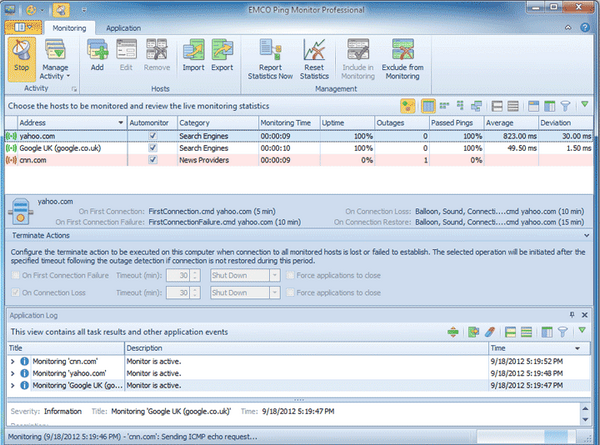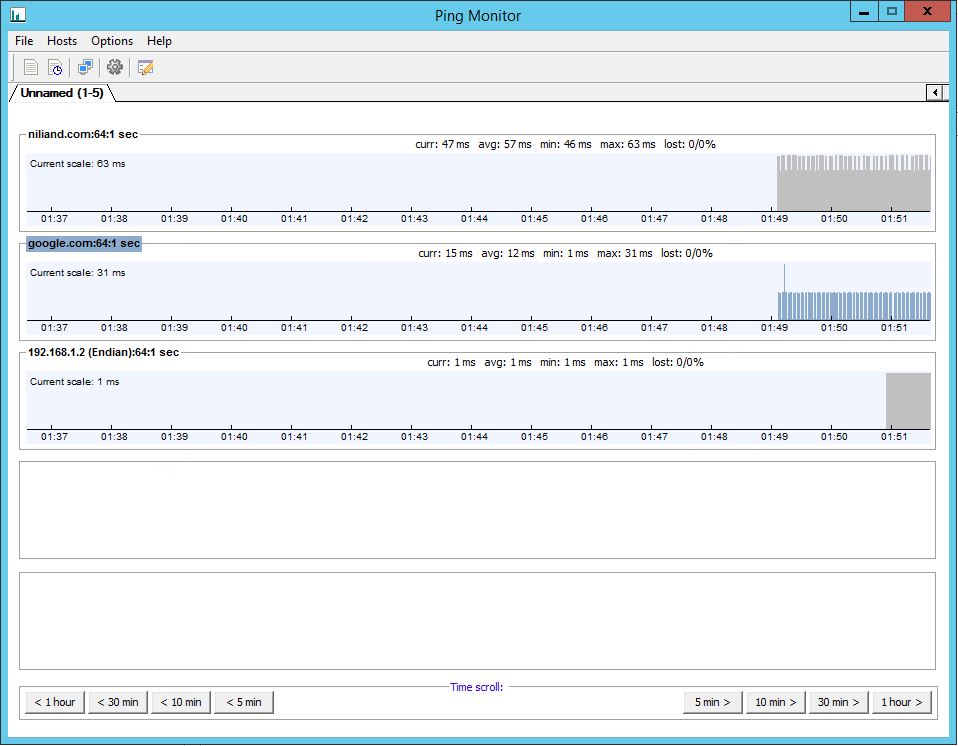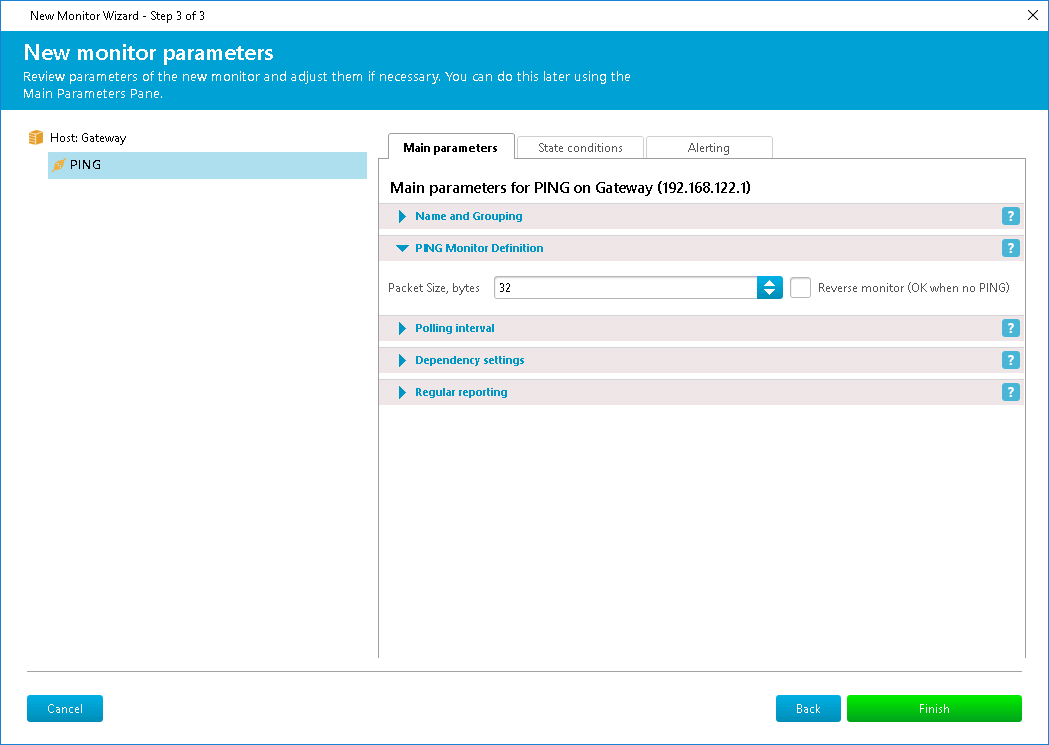
If configured, the record's Filter Chain configuration will reference certain answer metadata fields to make traffic routing decisions.įor example, you can attach a monitor to the Up/Down metadata field within the corresponding DNS answers, and then create a Filter Chain that uses the "Up" filter, ensuring only available endpoints are returned to requesting clients.
PING NETWORK MONITOR UPDATE
You can connect a monitor to one or more answers within DNS records to automatically update the corresponding answer as conditions change.

Device uplink dependencies:ĭevice uplink dependencies can be configured to automatically stop polling a dependent device, when the parent device is down.NS1 monitors collect health and performance data from a specified device or endpoint and then send the data back to the NS1 platform. This helps you in prioritizing your critical servers and other devices in your network. If the device remains unresponsive for the.įor version 125215 and above, the above said severities can be configured manually via device downtime settings. Here is a chart that explains the downtime severity propagation in OpManager by default. In other words, "On Hold" is adhoc and "On Maintenance" is scheduled.Īppears when the dependent device is down. The maintenance can be scheduled within OpManager. Maintenance state: During the period maintenance window you can place the device under maintenance mode. Unmanage device: If you wish to pause the device being monitored: At times, you may need to restart the device frequently to fix a problem, so this feature comes handy to pause OpManager from monitoring the device.

This appears when the device is 'Down' or not available.Īppears when the dependent device(s) is down or unavailable. Status indications in availability report This in-turn helps you avert false positives. OpManager also displays various other device status indications apart from the device Up/ Down status. The below image shows the device availability report with their current availability state. OpManager communicates with the device using monitoring protocols such as ICMP, TCP and SNMP. If there is no response after two consecutive pings, then OpManager will consider the device as unavailable. OpManager pings the monitored device, i.e it sends in data packets to the target device and waits for a response. You can customize the availability polling interval to any specific infrastructure or a partcular device, based on your need. Whereas, for non-ICMP environment, especially to monitor the availability or uptime for your edge router or DMZ zone devices you can use TCP or SNMP instead. OpManager, as an uptime monitoring tool, polls the device for availability using ICMP ping by default.
PING NETWORK MONITOR WINDOWS

OpManager provides several availability monitoring, which includes The dashboard facilitates detailed monitoring and analysis of data from switches, routers, servers and any other network devices. ManageEngine OpManager which serves as an uptime monitor has an interface that provides real-time views of availability statistics. ManageEngine OpManager provides comprehensive network availability and uptime monitoring to ensure that all your network devices and services are up and running 24*7 continuously. Industry experts say that typical network availability must reach 99.999%. Any downtime of systems, networks or applications will translate into a huge revenue loss for the business. Hence, the implementation of an availability monitoring solution is essential. In a competitive business landscape where operating 24*7 is mandatory, high availability of network and services has become a critical factor of concern for enterprises of all sizes.


 0 kommentar(er)
0 kommentar(er)
